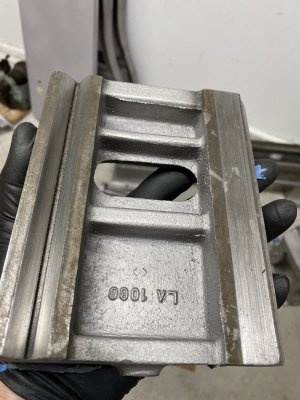- Joined
- Nov 24, 2014
- Messages
- 3,734
You asked recently how to straighten the bent gib and I haven't seen any replies. From the picture, showing a gradual bend, I'm assuming the gib is mallable enough to endure straightening without fracturing. If that seemed correct in person, I would do the following.
On a granite or cast iron surface plate, sandwitch some of the straight portion of the gib between a 1-2-3 block (on the surface plate) and a piece of CRS (on top). Clamp securely to the surface plate. Leave enough of the straight portion extending beyond the 1-2-3 block to allow another 1-2-3 block to be used as a moveable fulcrum. Using a dial indicatior on a surface gage, survey the exposed gib to quantify the magnitide and start of the bend. Place the fulcrum to support the straight portion. with the indicator displaying deflection, use a screw clamp (not a hammer or wrench) to straighten the bend. Don't try to get it 100% the first time. Notice the magnitude of spring back when you remove the straightening clamp. Straighten .XXX" and survey the part again to see the progress. Move the location of the fulcrum as required to keep the straight portion supported.
On the other hand, If you get a replacment compound from Bear . . .
On a granite or cast iron surface plate, sandwitch some of the straight portion of the gib between a 1-2-3 block (on the surface plate) and a piece of CRS (on top). Clamp securely to the surface plate. Leave enough of the straight portion extending beyond the 1-2-3 block to allow another 1-2-3 block to be used as a moveable fulcrum. Using a dial indicatior on a surface gage, survey the exposed gib to quantify the magnitide and start of the bend. Place the fulcrum to support the straight portion. with the indicator displaying deflection, use a screw clamp (not a hammer or wrench) to straighten the bend. Don't try to get it 100% the first time. Notice the magnitude of spring back when you remove the straightening clamp. Straighten .XXX" and survey the part again to see the progress. Move the location of the fulcrum as required to keep the straight portion supported.
On the other hand, If you get a replacment compound from Bear . . .











